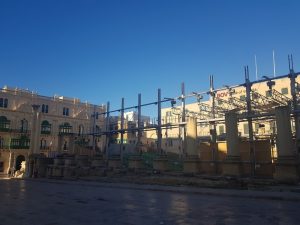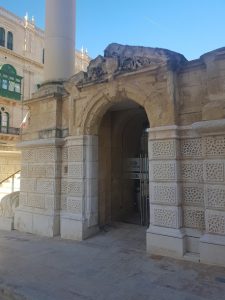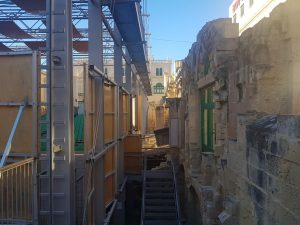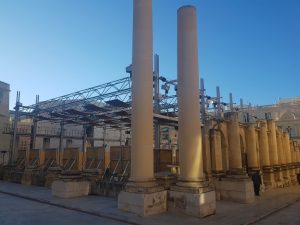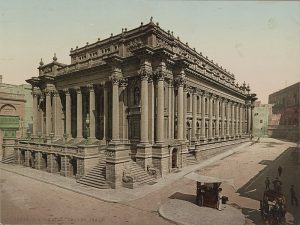Malta – South Eastern Region – Valletta – Royal Opera House (Pjazza Teatru Rjal)
The city’s royal opera house was built in 1866 and was designed by Edward Middleton Barry, who had also designed London’s Royal Opera House a few years before. The new opera house in Valletta pleased and delighted the people of the city until it burnt down in 1873. Not set back by this minor disaster work started again on the rebuild and it opened again in 1877.
All was well with the building until it collapsed on 7 April 1942 after being bombed by the Germans during the Second World War. The British decided that they’d demolish what was left to avoid any further injury, although since Malta was the most bombed location during the Second World War I’d have thought that the ruins were the least of the concerns that the local population had to deal with.
Anyway, the efficient and effective post-war government roared into action and managed to achieve precisely nothing in terms of rebuilding the opera house. Money was approved in 1955 to fund a new building, but it wasn’t spent and there were then decades of delays. It was decided that the locals could use the central area of the building as a car park, which didn’t seem a particularly useful way to utilise this prime piece of real estate.
In the 1980s the architect Renzo Piano contacted the government and made some recommendations about how the site could be used. The government once again roared into action and twenty years later they had again achieved nothing. However, in 2008 a decision was made to renovate the site and by 2013 the new open theatre was unveiled. It had taken just 71 years to resolve the problem……
One of the former entrance doors to the opera house.
The new open air theatre structure has been placed inside the original walls without impacting on them. The new building has been controversial as there were numerous suggestions as to how the site could have been redeveloped, but it is now known as the Pjazza Teatru Rjal.
The pillars show how large the original opera house was.
And to make it even easier to imagine, here’s what it looked like in 1911.
It’s positive that the site has been reused and Renzo Piano has done an excellent job, as he has with the city’s new gate and the Parliament building which is located next door. It’s just a shame that it took the government so long to actually do anything with the ruins of the building.

